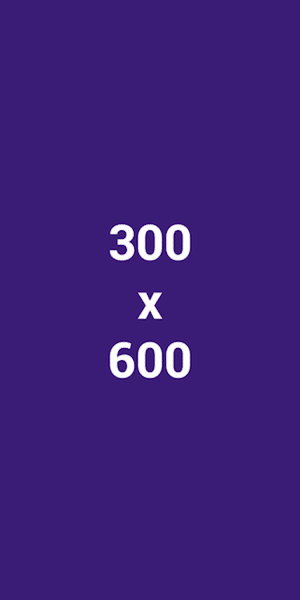19 September 2024
The Ethereum Enterprise Alliance (EEA) has today unveiled the initial version of its eagerly awaited Distributed Ledger Technology (DLT) Interoperability Specification. This pioneering specification strives to establish a uniform framework that facilitates seamless interactions across varied blockchain and distributed ledger platforms, signaling a significant breakthrough in the blockchain realm.
About the Specification
In an era where the efficient and reliable interplay between distinct blockchain ecosystems has become indispensable, the EEA’s DLT Interoperability Specification emerges as a beacon of innovation. By prescribing a standardized set of interfaces, the specification dramatically curtails both the development time and the propensity for errors that developers encounter when crafting bespoke network connectivity solutions. This standardization not only accelerates development processes but also enhances the reliability of cross-chain functionality, thereby fostering an ecosystem of greater collaboration and innovation among blockchain developers.
The genesis of this Specification traces back to the foresight of EEA members in 2019, who anticipated the critical necessity for generalized interoperability solutions in the blockchain domain. The Crosschain Interoperability Working Group, under the EEA canopy, spearheaded the development of this Specification. The Working Group has been instrumental in laying down the groundwork for crosschain interoperability, addressing pivotal aspects such as decentralization, security, and the technical nuances entailed in identifying and interfacing with blockchain and related distributed ledger technologies. Furthermore, this group has extended its collaboration beyond the EEA, engaging with multiple organizations and consortia to weave a richer fabric of standards and software solutions aimed at bolstering blockchain interoperability.
Weijia Zhang of Wanchain, serving as a co-chair of the Working Group, remarked on the occasion, unveiling the broader impact and implications of this specification. Zhang highlighted,
“The evolution towards Web3 envisages an intricate tapestry of myriad blockchain networks, each distinct yet interconnected, paving the way for a decentralized web. The advent of the EEA’s DLT Interoperability Specification marks a pivotal milestone in this journey, laying the foundation for seamless cross-chain communication, data exchange, and functional interoperability. As we forge ahead, our collaboration with peers, partners, and other standard-setting bodies will amplify, fostering a unified blockchain ecosystem.”
The Specification extends a comprehensive toolkit designed to empower “full-stack” interoperability. From the secure and verifiable exchange of messages between disparate networks to the development of sophisticated crosschain applications that leverage smart contracts across multiple platforms, the Specification is a cornerstone for building enterprise-grade, scalable, and highly innovative solutions that transcend the limitations of individual blockchain platforms.
Implementation Experience
Reflecting on the practical applications and efficacy of the DLT Interoperability Specification, the EEA has chronicled a series of implementation stories, with a spotlight on a multi-blockchain payment-versus-delivery settlement system. These narratives serve not only as a testament to the specification’s robustness and versatility but also as a repository of insights and learnings for developers embarking on their interoperability voyage. The Working Group remains in active dialogue with a spectrum of developers, absorbing feedback and insights that could refine and enhance the Specification.
Anaïs Ofranc of Qualitax, another co-chair of the Working Group, expressed pride in the launch, stating,
“The unveiling of version 1 of the DLT Interoperability Specification is a momentous event, symbolizing our unwavering commitment to fostering an open, collaborative, and vendor-neutral ecosystem for interoperability. This open standard is a leap forward in ensuring that diverse distributed ledger technologies can seamlessly interact, thereby nurturing innovation across various platforms without constraints.”
About the EEA
The Ethereum Enterprise Alliance stands at the forefront of blockchain revolution, uniting a global ensemble of blockchain luminaries, early adopters, innovators, enterprises, and developers. The Alliance is dedicated to catalyzing the commercial and professional deployment of Ethereum technologies, advocating for standards, fostering ecosystem trust, and conducting research to expedite the blockchain industry’s growth and maturation.
For those keen on delving deeper into the EEA’s DLT Interoperability Specifications, or contributing to its ongoing development through active participation in its Working Groups, the invitation is open. Prospective members and contributors can reach out to EEA’s Technical Program Director Chaals Nevile (chaals@entethalliance.org) for further engagement. Additionally, inquiries regarding EEA membership can be directed to membership@entethalliance.org, or interested parties can explore membership opportunities at https://entethalliance.org/become-a-member/.
In to follow more trending news articles like this, visit DeFi Daily News.
The release of the EEA’s DLT Interoperability Specification is not just a milestone for the Ethereum Enterprise Alliance but a hallmark event for the entire blockchain industry. It paves the way for a future where diverse blockchain networks can interoperate seamlessly, unlocking unparalleled levels of innovation, efficiency, and value creation across industries. As blockchain technology continues to evolve and take center stage in the digital transformation journeys of enterprises worldwide, the significance of interoperability standards cannot be overstated. The EEA’s initiative in this direction not only illustrates foresight and leadership but also reinforces the collective vision of a unified, decentralized future powered by blockchain.
In conclusion, the journey towards achieving full interoperability across distributed ledger technologies is akin to building bridges between isolated islands, allowing for the free flow of value, information, and innovation. As the EEA and its collaborators continue to forge these vital connections, the future of blockchain looks brighter and more interconnected than ever. Here’s to celebrating this giant leap forward, with an eye on the many more milestones that lie ahead in this exciting journey of technological evolution.



















